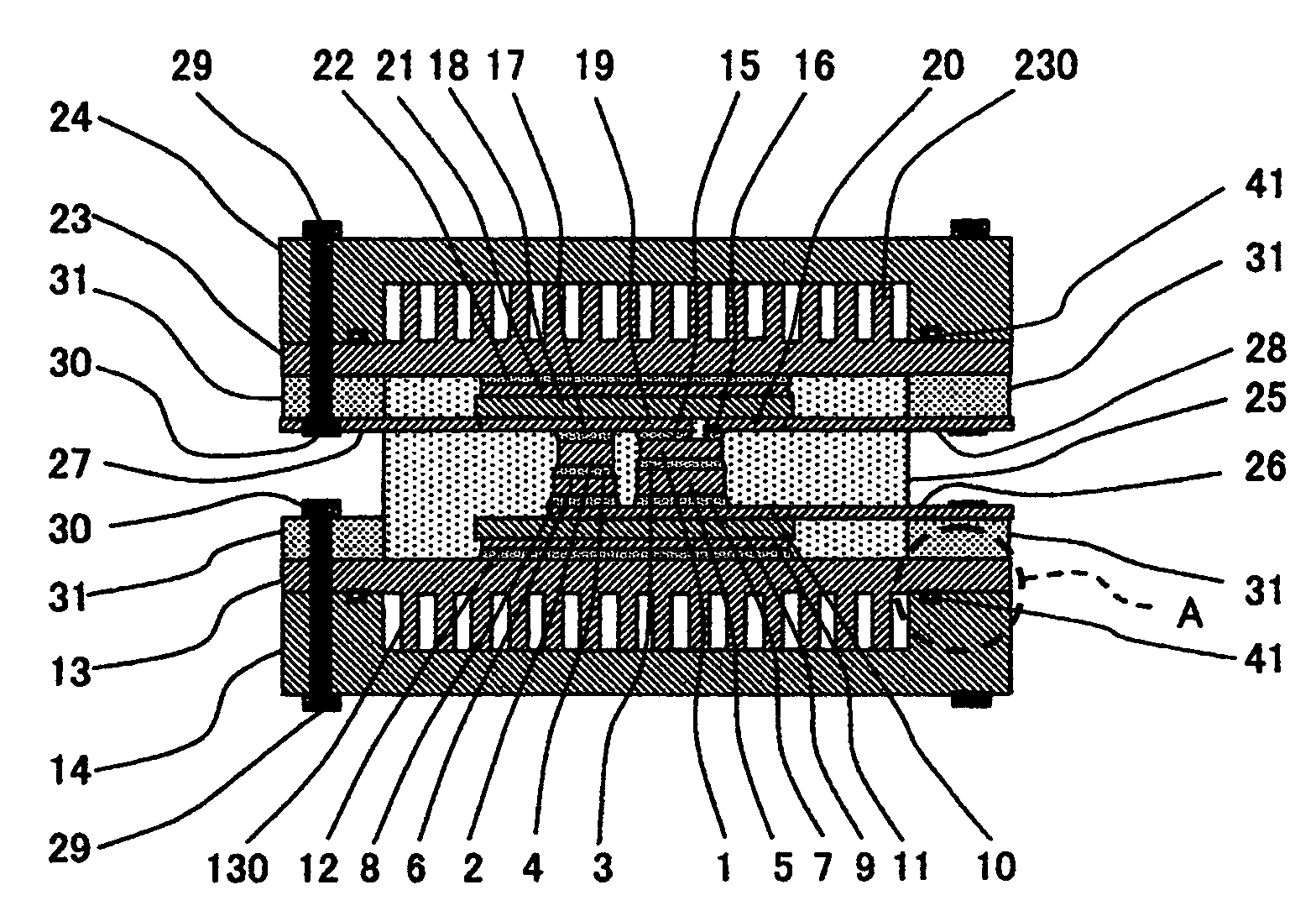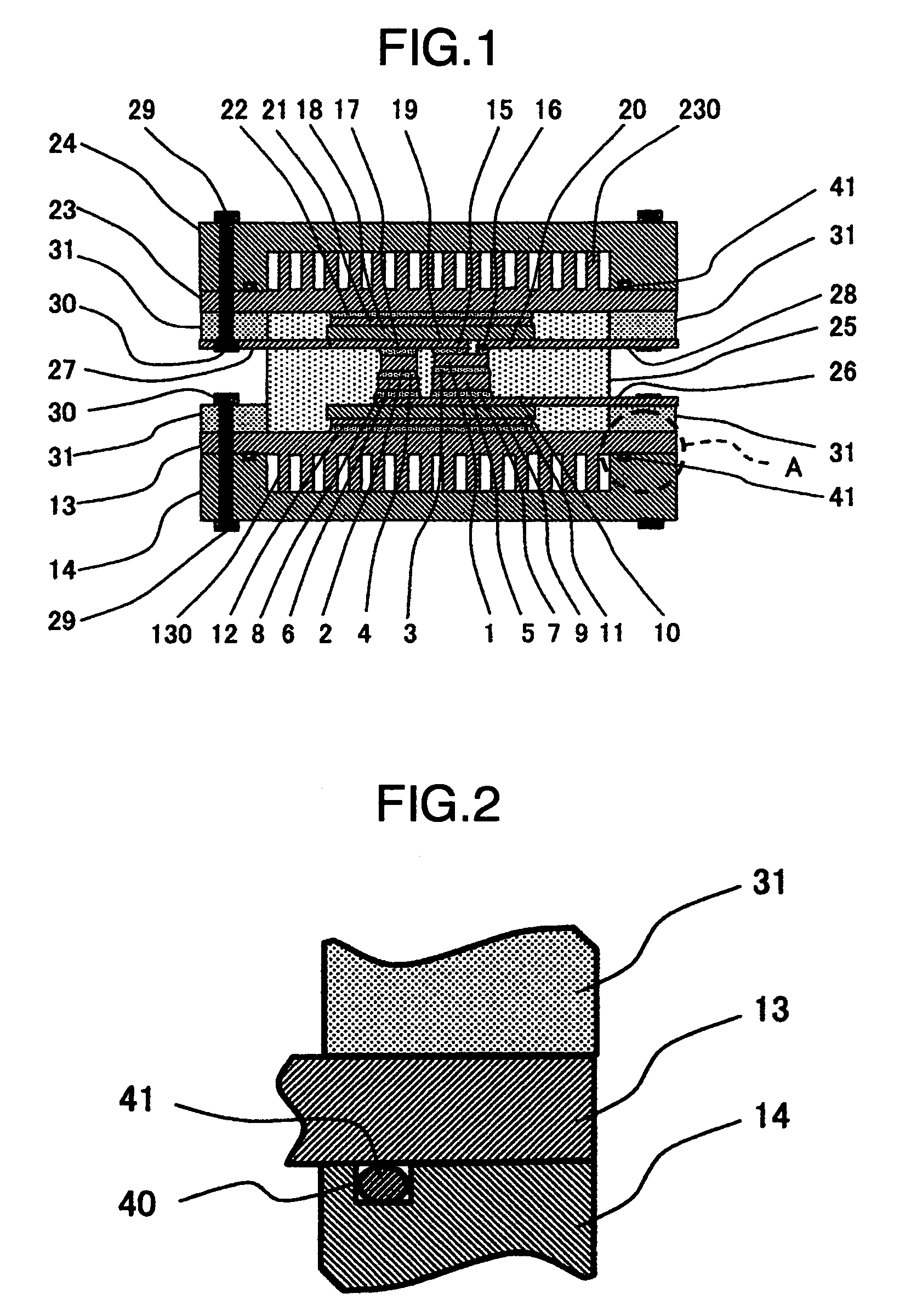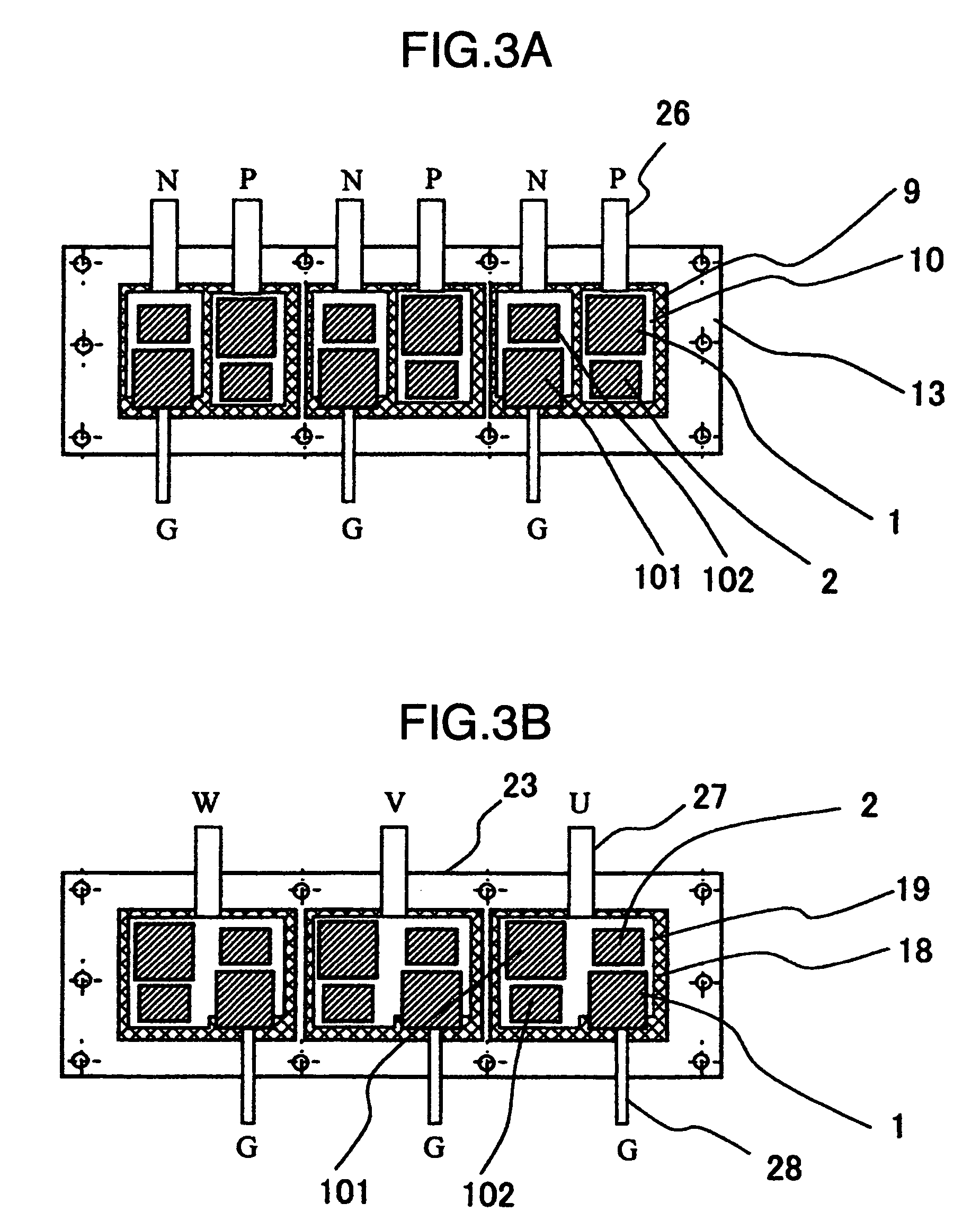Power semiconductor module
a technology of semiconductor modules and semiconductor devices, applied in semiconductor devices, semiconductor/solid-state device details, electrical apparatus, etc., can solve the problems of large thermal resistance that cannot be eliminated, and achieve the effects of reducing heat spreaders, high refrigerating capability, and thermal resistan
- Summary
- Abstract
- Description
- Claims
- Application Information
AI Technical Summary
Benefits of technology
Problems solved by technology
Method used
Image
Examples
embodiment 1
[0035]FIG. 1 schematically shows in vertical cross section a power semiconductor module as a first embodiment of this invention. The power semiconductor module shown in FIG. 1 incorporates therein power semiconductor chips 1, 2 such as insulated gate bipolar transistors (IGBTs) or freewheel diodes. The lower surfaces of the power semiconductor chips 1, 2 are joined to spacers 5, 6 with first joining material layers 3, 4 such as solder in between, respectively.
[0036]The spacers 5, 6 serve to adjust the overall thicknesses of the power semiconductor chips 1, 2 when they are different in thickness from each other. The spacers 4, 5 also serve to prevent electric discharge from taking place between the electrodes 28, 26 provided respectively on the upper and the lower sides of the power semiconductor chip as the insertion of the spacers increases the distance between the electrodes 26, 28. The spacers should preferably have small electric and thermal resistances. Copper, composite materi...
embodiment 2
[0061]FIG. 12 schematically shows in cross section a power semiconductor module as a second embodiment of this invention, the cross section being a vertical cross section perpendicular to the direction of flow of the refrigerant through the refrigerant flow channels. FIG. 13 schematically shows the cross sectional structure of the refrigerant flow channels according to this second embodiment, the cross section being parallel with the direction of flow of the refrigerant.
[0062]A heat sink joined to the lower surface of the lower insulating substrate 9 is similar in structure to that used in the first embodiment described above, wherein the heat spreader 13 with fins 130 erected thereon is covered by the casing 14, and refrigerant flows through the lower flow channels 70 formed in the space enclosed by the heat spreader 13 and the casing 14.
[0063]On the other hand, a heat sink joined to the upper surface of the upper insulating substrate 18 is a thin heat spreader 72 having a single r...
embodiment 3
[0067]FIG. 15 schematically shows in cross section a power semiconductor module as a third embodiment of this invention, the cross section being a vertical cross section perpendicular to the direction of flow of the refrigerant through the refrigerant channels. FIG. 16 schematically shows the cross sectional structure of the refrigerant channels according to this third embodiment, the cross section being parallel with the direction of flow of the refrigerant.
[0068]In this embodiment, contrary to the above described second embodiment, a thin heat spreader 76 is used as a lower refrigerant flow channel 77. The thin heat spreader 76 having a single refrigerant flow channel is used as a heat sink, instead of the lower heat spreader 13 with fins as used in the first embodiment described above. The upstream and downstream ends of the lower channel 77 are provided with connecting ducts 78 communicating with the upper channels 71. The connecting ducts 78 are formed with connecting members 7...
PUM
 Login to View More
Login to View More Abstract
Description
Claims
Application Information
 Login to View More
Login to View More - R&D
- Intellectual Property
- Life Sciences
- Materials
- Tech Scout
- Unparalleled Data Quality
- Higher Quality Content
- 60% Fewer Hallucinations
Browse by: Latest US Patents, China's latest patents, Technical Efficacy Thesaurus, Application Domain, Technology Topic, Popular Technical Reports.
© 2025 PatSnap. All rights reserved.Legal|Privacy policy|Modern Slavery Act Transparency Statement|Sitemap|About US| Contact US: help@patsnap.com



